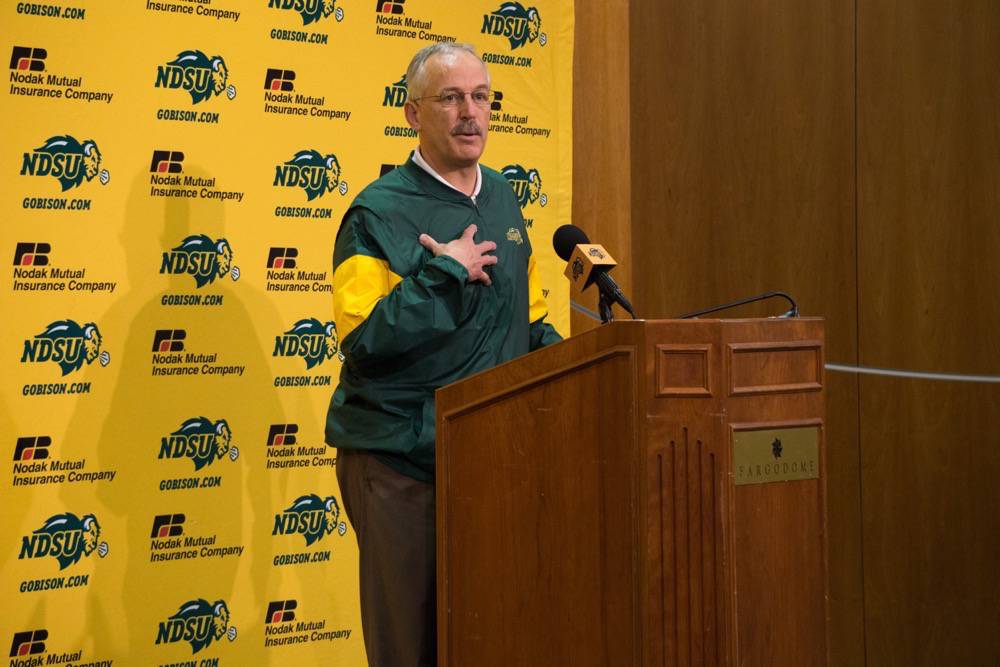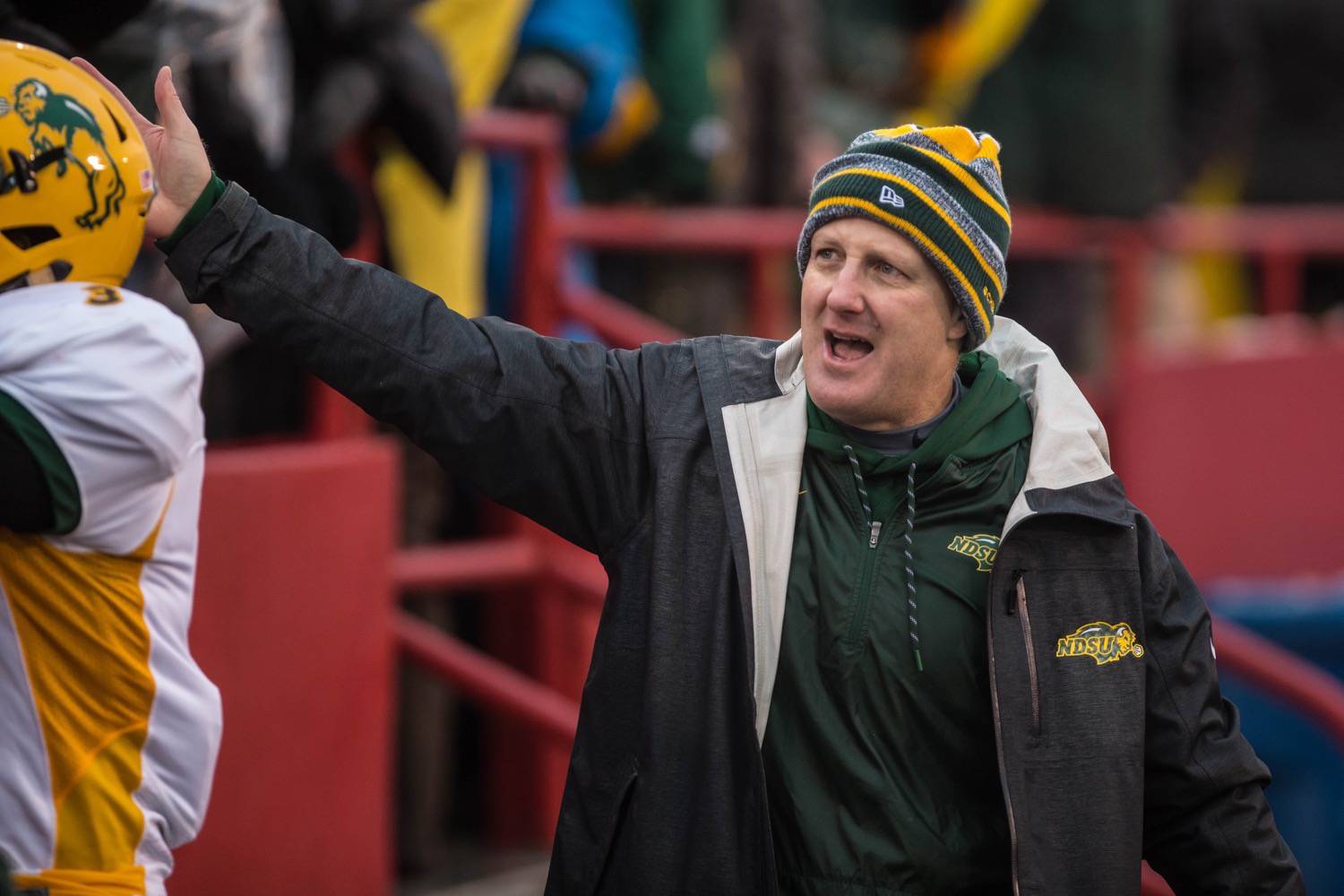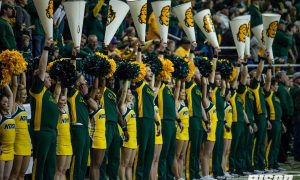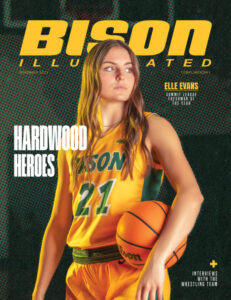Photos by Tim Sanger and special to Bison Illustrated
All the news that’s fit to print. It’s been called the most famous seven words in American journalism. These words have graced the front page of one of our nation’s most important newspapers, the New York Times, since 1897. Ask a person on the street what it means, though, and you may elicit responses evoking another seven words made famous by George Carlin, depending on the news consumer and their viewpoints. Since the earliest days of our republic, newspapers have drawn scorn from even the foremost of our founding fathers. George Washington, writing to his vice president, John Adams, explained why he was not interested in running for a third term, telling Adams that he was “disinclined to be longer buffeted in the public prints by a set of infamous scribblers.” For a more modern example, Nixon had his enemy’s list that included the press, infamously telling his national security advisor Henry Kissinger in 1972 to “never forget, the press is the enemy.”
Notwithstanding, 200 years before Nixon dangerously sought to make the free press public enemy number one, our infant nation stood at the brink where its very existence was in doubt under the floundering Articles of Confederation. In pushing for a new form of government that ultimately took root in the fertile soils of the Constitutional Convention and subsequent Bill of Rights, James Madison – who is often referred to as the father of this loadstar document and the liberties it guarantees – wrote in a December 1791 column for the National Gazette that “a free press, and particularly a circulation of newspapers through the entire body of the people,” was vital to ensure a healthy democracy. Arguably the most respected journalist in American history, Walter Cronkite would later echo Madison, saying, “Freedom of the press is not just important to democracy, it is democracy.” It was true then, and it is true now.

You know the faces in this issue of Bison Illustrated particularly well. Our local media does as good of a job as anyone else in the country fulfilling their charge – in this case, covering North Dakota State University athletics. They labor long hours in bringing you stories and telling the narrative that transcends game scores and the wins and losses. You welcome them into your tailgates for broadcasts. You follow them on Twitter and respond to their stories and insight with the snap of a keystroke on your smartphone. And, sometimes, you take issue with how they tell their stories, or even their decision to tell certain stories. Ask yourself, what is your expectation of these journalists? To be cheerleaders, or call it like they see it. To provide an objective viewpoint that asks the tough, but fair, questions, or to make excuses when things go awry.
In a recent Bison Illustrated podcast, we had Forum columnist and WDAY radio host Mike McFeely on to discuss, among other things, the media’s coverage of North Dakota State. You can listen to the podcast on iTunes and Soundcloud, and I encourage you to do so. Of all the local scribes, none has drawn the ire of some Bison fans like McFeely. Like him or not, he is one of the leading voices covering both sports and the news in our region, and has followed NDSU’s rise from a small-market Division II school to a Division I powerhouse with its own unique national brand. As we said quite honestly in describing the podcast, McFeely’s vantage point and longevity has given him insight and an institutional knowledge only a few others have when it comes to the Bison.
We need questioning voices and we need differing perspectives and opinions.
We asked McFeely how he viewed the role of journalists in covering their subjects, and the need to ask the obvious, and sometimes not so obvious, questions. His answer was to the point. Balance. “There’s also a role for somebody to say, whoa, can we pump the brakes just a little bit here, and say, you know what, maybe everything isn’t exactly always perfect,” said McFeely. “When people do approach me, … most of them just say, I disagree with a lot of what you write when it comes to NDSU, especially if you’re critical of them, but I can see it.” As simple as it sounds, the questions McFeely and other local journalists ask when covering the Bison are the same things that you’re discussing with your friends while watching the game, i.e., what happened on that play, why did you call that play in this situation, etc.
Whether it’s sports, the hard news of covering a rough and tumble political campaign, or following the ebbs and flows of daily life, we need people to ask tough questions and offer the unvarnished truth. Don’t mistake what I’m saying. I’m not equating sports, and the outcome of sporting events, to things like the impact of tariffs on soybean markets, the debate over immigration policy, or the assault from some corners on a free and independent press. What I am saying, what I am emphatically saying, is that we need the balance McFeely described.
We need questioning voices and we need different perspectives and opinions. Like Madison and Cronkite acknowledged, this is essential in a democracy. Thomas Friedman, one of the leading thinkers and journalists in America today, wrote a column in May 2015 explaining his approach when covering and commenting on the news. Friedman says he knows that his column works when the reader responds with one of the following reactions: (1) I didn’t know that; (2) I never looked at it that way before; (3) I never connected those things; (4) You said what I thought, but didn’t know how to say it; (5) You made me laugh or you made me cry; or (6) You challenged me. Bottom line, good journalism – sports or otherwise – while you may disagree, makes you think and engages you. We are fortunate to live in a place where, whether it’s North Dakota State athletics or the weightier realms of public policy, our media unapologetically serves this purpose.
According to a 2016 survey conducted by Freedom House, an independent watchdog organization dedicated to the expansion of freedom and democracy around the world, only 13 percent of the world’s population lives in countries with a free press. All the news that’s fit to print has a sacrosanct meaning here. In the United States Supreme Court’s landmark decision protecting First Amendment rights in New York Times Co. v. United States, Justice Hugo Black wrote that “In the First Amendment, the Founding Fathers gave the free press the protection it must have to fulfill its essential role in our democracy. The press was to serve the governed, not the governors.” All the news that’s fit to print doesn’t mean we have to agree with it. But it does mean we should be zealous in guarding and protecting that freedom from attack, even if we don’t always agree with the messenger.
Follow on Twitter: @Swany8

Listen and Subscribe to the Bison Illustrated Podcast!
Bison Illustrated magazine senior columnist Josh Swanson and editor Nolan Schmidt take their free-flowing North Dakota State University thoughts off the page and into your ears. You can subscribe to the weekly podcast on SoundCloud and iTunes. Just search “Bison Illustrated Podcast” on both platforms and give the show a listen!










